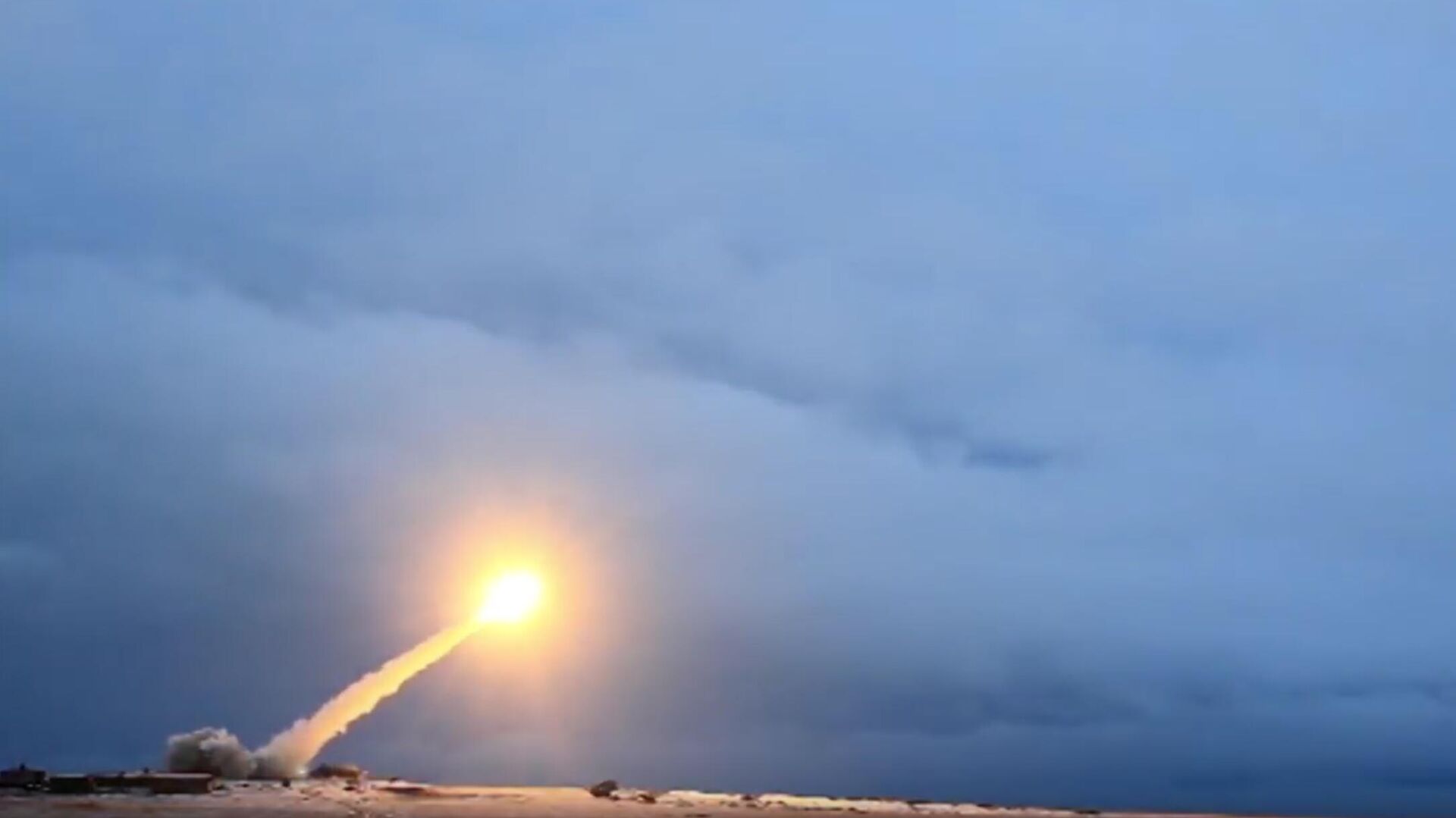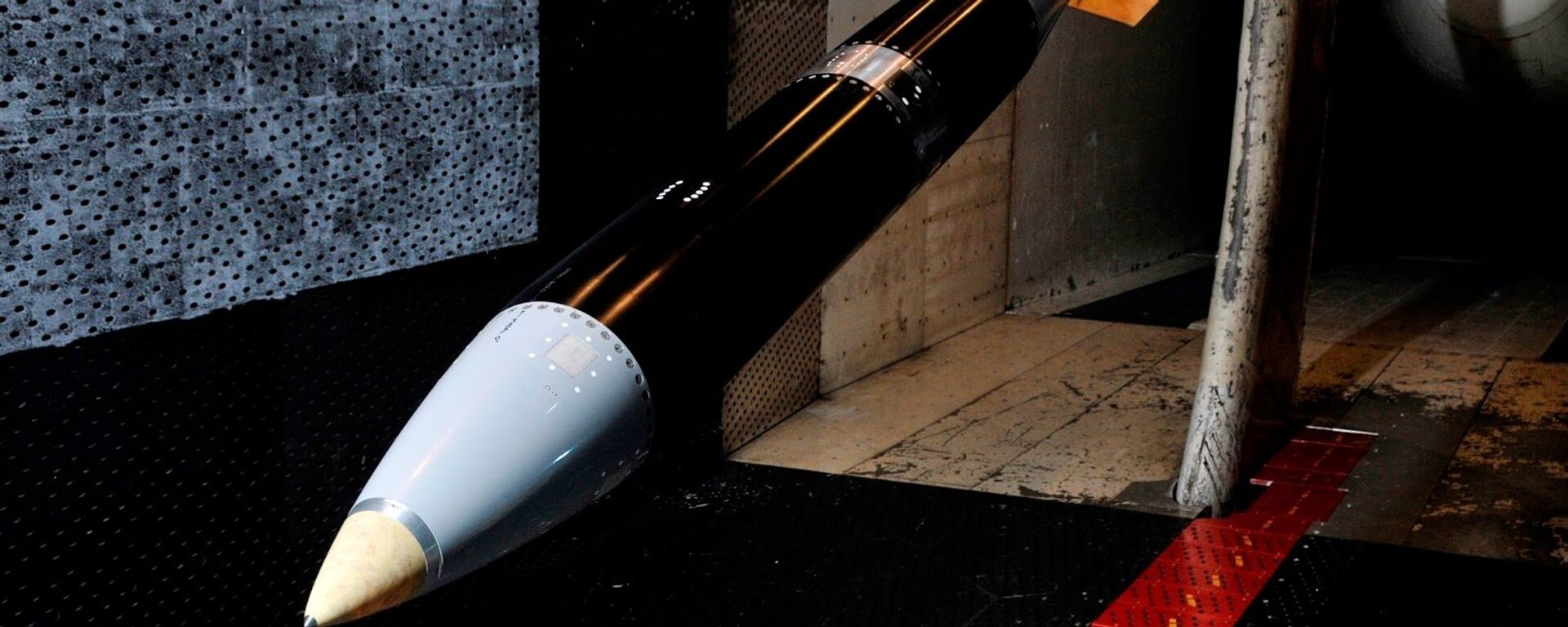How US is Flirting With Idea of 'Limited' Nuclear Conflict With Russia and China

© Sputnik / Russian Ministry of Defense
/ Subscribe
Washington is considering the deployment of nuclear-armed cruise missiles on Virginia-class attack submarines to deter China and Russia, according to the Asia Times.
US lawmakers have recently focused on how to modify Virginia-class attack submarines (SSN) to install nuclear-armed sea-launched cruise missiles (SLCM-N). Last week they summoned Vice Adm. Johnny Wolfe to discuss the complexities and uncertainties concerning arming attack submarines with SLCM-N. The discussion revolved around enhancing their nuclear deterrence against China and Russia, according to the Asia Times.
The SLCM-N is a cruise missile with a low-yield nuclear warhead launched from surface ships or attack submarines (SSNs). It was first proposed in 2018 alongside the low-yield version (with less than 10 kilotons of explosive power) of the W76 warhead to arm long-range ballistic missile submarines.
Ukraine used Western weapons ‘on several occasions’ to strike Russia – report
— Sputnik (@SputnikInt) May 29, 2024
Kiev failed to notify Berlin of its use of a German-supplied Patriot air defense system "at least once to take action" against Russian targets, according to the German newspaper Bild.
The strike was… pic.twitter.com/x3SgCSyaau
What are the SLCM-N program's merits in the eyes of American lawmakers, military, and scholars?
First of all, US military experts argue that SLCM-Ns would allow the US to engage in a "limited" nuclear exchange in contrast to "massive retaliation".
"If conflict crosses the nuclear threshold, lower yields would signal a clear interest in limiting its intensity," wrote Lieutenant Commander Alan Cummings, US Navy Reserve, for US Naval Institute in April 2024.
In addition, using theater-based nuclear-armed sea-launched cruise missiles might not be seen as "legitimizing" a nuclear retaliatory strike on the American homeland, according to US military experts. They suggest that it would make it hard for American adversaries to immediately identify the origin of the strike after an attack.
Placing SLCM-Ns on US attack submarines will allow the Pentagon to maintain a widespread and enduring presence in the North Atlantic, Arctic Ocean, and Asia-Pacific, according to Kyle Balzer of the American Enterprise Institute.
"Due to the low observability of undersea launchers, Beijing and Moscow will have to assume it is loitering on site," wrote Balzer for Breaking Defense on February 28. "If deployed on select surface ships, as well as submarines, the deterrent effect could be even greater."
Balzer pointed out that the deployment of SLCM-Ns on attack subs and surface ships would create an atmosphere of ambiguity: Russia and China wouldn't be sure if the vessels are nuclear-armed or not, thus complicating decision-making and creating additional deterrence.
"China and Russia would have to assume SLCM-N's presence — whether or not it is deployed, in great numbers, to forward areas. In this sense, there is considerable deterrence value and cost-effectiveness in ambiguity," argued the scholar.
American lawmakers have been pushing ahead with the program for the last several years. While the United States has not deployed a nuclear-armed sea-launched cruise missile since 1991, the Trump administration argued in 2018 that the SLCM-N would "provide a needed non-strategic regional presence" in Europe and Asia and contribute "to deterrence and assurance of allies, especially in Asia."
The SLCM-N program was reversed by President Joe Biden in 2022 as an excessive and costly solution. Nonetheless, after a heated debate, the initiative was passed within the framework of the National Defense Authorization Act for fiscal year 2024 under the pretext of Russia's special military operation and China's alleged plans to "invade" Taiwan. It became law in December 2023 with instructions to achieve operational capability of the SLCM-N by 2034.
Is 'Limited' Nuclear Conflict Possible?
Russia has repeatedly warned the US against lowering the nuclear threshold and hypothesizing a possibility of a limited nuclear exchange. According to Moscow, the "limited" use of nuclear weapons by no means reduces the risk of an all-out nuclear war, but rather invites it.
Commenting on Washington's plans to deploy low-yield nuclear arms on its submarines or surface vessels in April 2020, Russian Foreign Ministry spokeswoman Maria Zakharova condemned the move as destabilizing.
"Those who like to theorize about the flexibility of American nuclear potential must understand that in line with the Russian military doctrine such actions are seen as warranting retaliatory use of nuclear weapons by Russia," Zakharova said.
In May, the Russian Foreign Ministry warned NATO against delivering F-16 fighter jets to Ukraine, given that the war planes could carry low-yield nuclear B61-12 bombs. Moscow said it will treat F-16s in Ukraine as nuclear-capable weapon systems, regardless of their model, and will consider their deployment a deliberate provocation.
China has also repeatedly lambasted Washington for switching to low-yield nuclear arms as a return to the Cold War era. Beijing also raised the alarm over AUKUS (Australia, UK and US pact) plans to build nuclear-powered submarines in Australia as violating non-proliferation principles. Both Russia and China pursue a no-first-use nuclear doctrine.



